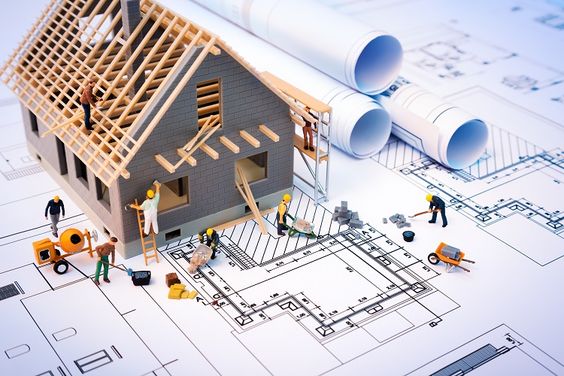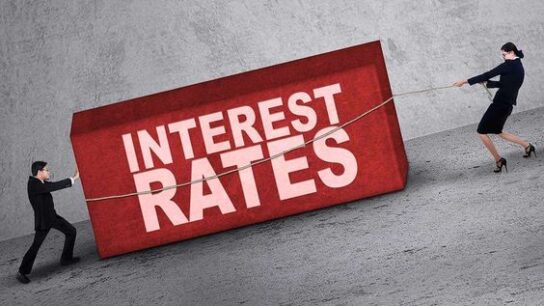When embarking on a new construction project, whether it’s building your dream home or expanding a commercial property, securing the right financing is crucial. Construction loans are designed to cover the costs of building or renovating a property, and understanding construction loan interest rates is key to managing your project’s budget and financial health. This guide will explore the factors influencing construction loan interest rates, how to compare different options, and tips for securing the best rate.

- What is a Construction Loan?
- Factors Influencing Construction Loan Interest Rates
- How to Compare Construction Loan Interest Rates
- Tips for Securing the Best Construction Loan Interest Rate
- Conclusion
- Frequently Asked Questions (FAQ) About Construction Loan Interest Rates
- What is a construction loan?
- How do construction loan interest rates compare to traditional mortgage rates?
- What factors affect construction loan interest rates?
- How can I improve my chances of getting a lower construction loan interest rate?
- What types of construction loans are available?
- What is a draw schedule in a construction loan?
- How do construction loan fees impact the overall cost?
- Can I refinance a construction loan?
- How do market conditions affect construction loan interest rates?
- Where can I find more information on Construction Loan Interest Rates?
What is a Construction Loan?
Definition and Purpose
A construction loan is a short-term loan used to finance the construction of a new building or major renovations to an existing property. Unlike traditional mortgages, which cover the cost of an existing property, construction loans are designed to cover the costs of building or significant improvements.
Key Features:
- Short-Term Duration: Typically, construction loans have a term of 6 to 12 months, often extending through the duration of the construction phase.
- Draw Schedule: Funds are disbursed in stages or draws based on the completion of certain construction milestones.
- Interest Rates: Generally higher than traditional mortgages due to the higher risk involved in construction projects.
For more details, visit Construction Loan Basics.
Factors Influencing Construction Loan Interest Rates
1. Credit Score
Your credit score plays a significant role in determining the interest rate for your construction loan. Lenders use your credit score to assess your creditworthiness and the risk of lending to you. Higher credit scores typically result in lower interest rates.
Tips for Improving Your Credit Score:
- Pay Bills on Time: Timely payment of bills boosts your credit score.
- Reduce Debt: Lowering your existing debt can improve your credit rating.
- Check Your Credit Report: Regularly review your credit report for errors and correct them.
For more information on credit scores, visit FICO Credit Scores.
2. Loan Term
The loan term is the length of time you have to repay the construction loan. Shorter loan terms typically come with lower interest rates but higher monthly payments. Conversely, longer terms may offer lower monthly payments but higher overall interest costs.
Considerations for Loan Terms:
- Short-Term Loans: Often preferred for quick construction projects.
- Long-Term Loans: May be suitable for larger or more complex projects with extended timelines.
Learn more about loan terms at NerdWallet Loan Terms.
3. Down Payment
A larger down payment can lead to a lower interest rate on your construction loan. Lenders view a substantial down payment as a sign of financial stability and a lower risk of default.
Typical Down Payment Requirements:
- Standard Down Payment: Generally ranges from 20% to 30% of the total construction cost.
- Higher Down Payments: May result in better interest rates and more favorable loan terms.
Explore down payment options at Bankrate Down Payment.
4. Market Conditions
Economic conditions and market trends can impact construction loan interest rates. Factors such as inflation, interest rate policies by the Federal Reserve, and overall economic stability influence lending rates.
Current Market Trends:
- Inflation: Higher inflation often leads to increased interest rates.
- Federal Reserve Policies: Central bank decisions affect overall lending rates.
For insights into current economic conditions, visit Federal Reserve Economic Data.
5. Loan Type and Lender
The type of construction loan and the lender you choose can also affect your interest rate. Different lenders offer various loan products, each with its own interest rate structure.
Types of Construction Loans:
- Construction-to-Permanent Loans: Convert to a traditional mortgage once construction is complete.
- Standalone Construction Loans: Require a separate mortgage to be secured after construction.
Compare loan options at LendingTree Construction Loans.
How to Compare Construction Loan Interest Rates

1. Shop Around
Comparing offers from multiple lenders is crucial to finding the best construction loan interest rate. Each lender may have different terms, fees, and rates.
Steps to Compare Rates:
- Obtain Quotes: Request quotes from various lenders.
- Compare APRs: Look at the Annual Percentage Rate (APR), which includes interest rates and fees.
- Evaluate Terms: Consider the loan term, repayment options, and any associated fees.
Use comparison tools at Bankrate Loan Comparison.
2. Understand Fees and Costs
Fees and costs associated with construction loans can impact the overall cost of borrowing. Be sure to understand all fees, including origination fees, inspection fees, and any potential prepayment penalties.
Common Fees to Consider:
- Origination Fees: Charged by the lender for processing the loan.
- Inspection Fees: For verifying construction progress.
For more details on loan fees, visit NerdWallet Fees Overview.
3. Negotiate Terms
Negotiating terms with lenders can help you secure a better interest rate. Discuss your financial situation and project details to see if the lender can offer more favorable terms.
Negotiation Tips:
- Highlight Your Creditworthiness: Emphasize a strong credit history and substantial down payment.
- Explore Different Lenders: Shop around to leverage competitive offers.
Learn more about negotiating loan terms at Forbes Loan Negotiation.
Tips for Securing the Best Construction Loan Interest Rate
1. Improve Your Credit Score
Prior to applying for a construction loan, work on improving your credit score. A higher credit score can help you qualify for better interest rates.
2. Save for a Larger Down Payment
Saving a larger down payment can reduce your loan amount and potentially lead to lower interest rates.
3. Choose the Right Lender
Select a lender that offers competitive rates and favorable loan terms. Consider both traditional banks and alternative lenders, such as credit unions or online lenders.
4. Consider Loan Type
Evaluate different types of construction loans to find the one that best fits your needs. Construction-to-permanent loans might offer benefits over standalone loans in certain situations.
5. Monitor Market Conditions
Stay informed about economic conditions and market trends that could impact interest rates. Adjust your loan application timing based on favorable market conditions.
Conclusion
Understanding construction loan interest rates is essential for managing your construction project’s finances effectively. By considering factors such as credit score, loan term, down payment, market conditions, and lender options, you can secure a loan with favorable terms and rates. Utilize comparison tools, negotiate with lenders, and stay informed about market trends to make the best financial decisions for your construction project.
For further information and tools to help with your construction loan, visit:
By leveraging these resources, you can enhance your understanding of construction loan interest rates and make informed decisions for a successful construction project.
Frequently Asked Questions (FAQ) About Construction Loan Interest Rates
What is a construction loan?
A construction loan is a short-term loan specifically designed to finance the building or major renovation of a property. Unlike traditional mortgages, which are used to purchase existing properties, construction loans cover the costs associated with the construction phase, including materials, labor, and other related expenses.
For more information on construction loans, visit Construction Loan Basics.
How do construction loan interest rates compare to traditional mortgage rates?
Construction loan interest rates are generally higher than traditional mortgage rates. This is due to the higher risk involved in construction projects, which can be influenced by factors like project delays and cost overruns. Construction loans are also short-term, which can lead to higher rates compared to long-term mortgages.
What factors affect construction loan interest rates?
Several factors influence construction loan interest rates, including:
- Credit Score: Higher credit scores typically result in lower interest rates.
- Loan Term: Shorter loan terms often have lower rates, but higher monthly payments.
- Down Payment: A larger down payment can lead to lower interest rates.
- Market Conditions: Economic factors and central bank policies affect overall lending rates.
- Loan Type and Lender: Different lenders and types of construction loans can offer varying rates.
How can I improve my chances of getting a lower construction loan interest rate?
To secure a lower construction loan interest rate:
- Improve Your Credit Score: Pay bills on time and reduce existing debt.
- Save for a Larger Down Payment: A larger down payment can reduce the loan amount and potentially lower the rate.
- Shop Around: Compare rates from multiple lenders to find the best offer.
- Negotiate Terms: Discuss your financial situation and project details with lenders to negotiate better terms.
What types of construction loans are available?
There are several types of construction loans:
- Construction-to-Permanent Loans: These loans convert to a traditional mortgage once construction is complete.
- Standalone Construction Loans: These are short-term loans that require a separate mortgage to be secured after construction.
For more details on loan types, visit LendingTree Construction Loans.
What is a draw schedule in a construction loan?
A draw schedule is a payment plan used in construction loans where funds are disbursed in stages based on the completion of specific construction milestones. The contractor or borrower requests funds at different stages of the project, and the lender disburses the money as the work progresses.
How do construction loan fees impact the overall cost?
Construction loan fees can include origination fees, inspection fees, and other costs associated with processing the loan. These fees can impact the overall cost of borrowing, so it’s important to understand all associated costs when comparing loan offers.
For information on common loan fees, visit NerdWallet Fees Overview.
Can I refinance a construction loan?
Yes, you can refinance a construction loan. This often involves converting a short-term construction loan into a long-term mortgage once the construction is complete. This process is known as a construction-to-permanent loan, which helps streamline financing by combining the construction and permanent financing phases.
How do market conditions affect construction loan interest rates?
Market conditions, including inflation, economic growth, and central bank policies, can impact construction loan interest rates. For example, high inflation or changes in central bank interest rates can lead to higher borrowing costs. Monitoring these conditions can help you time your loan application more effectively.
For insights into current economic conditions, visit Federal Reserve Economic Data.
Where can I find more information on Construction Loan Interest Rates?
For comprehensive information on construction loan interest rates and related financial topics, check out:
By addressing these common questions, you can better understand construction loan interest rates and make informed decisions for your construction project.






[…] engaging with AEYXX for your financial needs, it’s crucial to understand how AEYXX interest rates work. This guide provides an in-depth look at AEYXX interest rates, factors influencing them, and tips […]